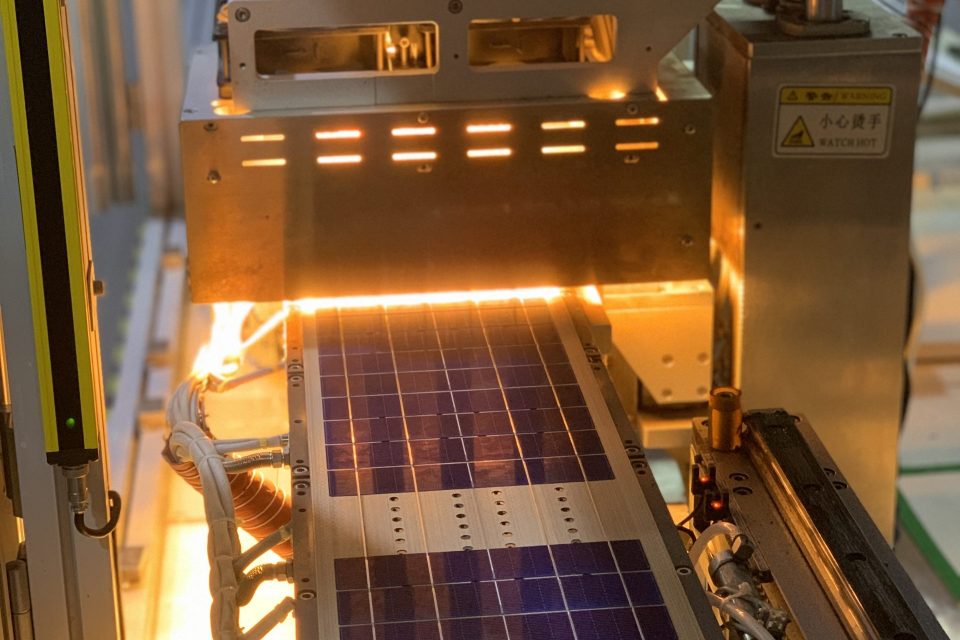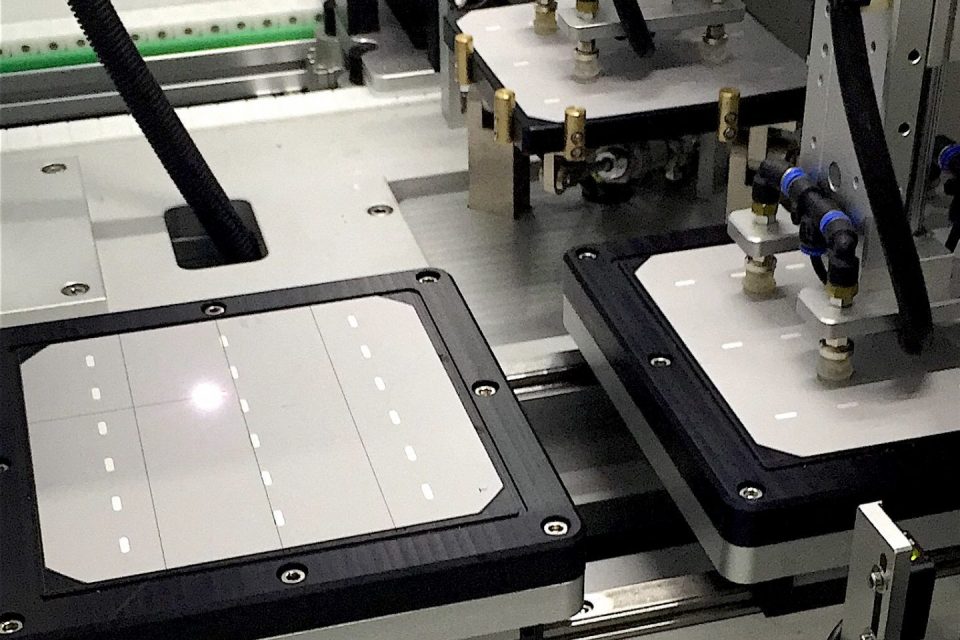The numbers speak for themselves. Around one billion people still live without electricity and another billion lack access to a reliable power source. Solar solutions present a unique opportunity to increase energy access and fundamentally improve living conditions in many countries, without affecting the climate or environment.
Things are changing in Africa, the main energy access market, and some of the conventional stages of technological development are being bypassed altogether. There is no need for a bank in town when you have a mobile phone – and the town is miles away. The same goes for the energy supply. If there is no grid, you find better solutions to provide energy.
With this in mind, it’s no surprise that the energy access market is growing. From 2016 to 2018, GOGLA affiliates reported that the total installed capacity of solar modules used to power solar lamps grew by around 73% to 58.81 megawatts. In this segment, these companies cover an estimated market share of 29%. In the off-grid solar appliance segment, 350,000 devices such as televisions, fans, refrigeration systems and water pumps were sold by GOGLA affiliates in Asia and Africa in the second half of 2018. The market may be young, but it is developing at a rapid pace.
Pay-as-you-go systems are one of the innovations that are changing the lives of millions. Customers do not purchase their own solar home system but pay to use it instead. The share of pay-as-you-go systems in total sales is impressive, at 57% in the solar lamp segment and 92% for off-grid solar appliances. The figures are hardly surprising, as this approach gives people access to energy without the need to first invest in the technology.

Replacing devices is difficult when transport is time-consuming.
Source: Mobisol
Pay-as-you-go models spur paradigm shift
When appliances or lamps are used off-grid, the consequences of a drop in efficiency or a solar module failure are especially severe. In grid-connected systems, these issues will at most affect the power yields and the income from operating the system. If a solar lamp fails, however, its users may suddenly find themselves in the dark. And if an outage strikes a solar-powered refrigeration system, food may spoil or essential medications may become unusable as a result.
Regular outages affecting lease-to-own or pay-as-you-go devices can also threaten the business model of the equipment provider. Lease-to-own customers rarely have much financial flexibility. If the device they are leasing stops working, they often find themselves unable to make payments. Under a pay-as-you-go scheme, outages could leave the provider without their usual income from repayments – for example, if a solar charging station no longer provides electricity, charging cycles can no longer be invoiced. Repairing or replacing devices is particularly costly in countries where infrastructure is insufficient and services must be provided across great distances.
‘As pay-as-you-go models continue to spread, the operational performance and durability of the solar modules deployed will become increasingly important,’ says Robert Händel, CEO of OPES Solutions. OPES develops and produces solar solutions for solar home systems, solar water pumps and other applications such as streetlamps, parking meters, panels for sensors and many more.

The combination of automation and flexibility is crucial.
Balancing quality and cost-efficiency
The off-grid segment requires a different approach to quality than standard solar modules do: ‘There’s no point in using the on-grid quality standard in the off-grid market. Our whole management team has a long history in the standard module business, and what we’ve learned here is that we have to forget everything we know and start afresh with a different approach. We need to think in new ways because no two applications are identical,’ explains Händel.
From the viewpoint of OPES, the quality requirements depend on how the solar module will be used. When it comes to solar pumps, for example, frame tolerances may not be as important as the module’s durability and the assembly solution. Solar-powered lamps, meanwhile, are generally used when there is little sunlight. This means that the module’s performance in low light may be more important than its maximum efficiency under optimal conditions.
Another aspect to consider is the output power. Operators of grid-connected systems are always pleased if a module outperforms its specifications. The more power, the better.
But if the module is supplying power to an electronic system, increased output can sometimes become a problem.
Händel adds: ‘For the off-grid segment – especially in the energy access market, where the price sensitivity is high – it is crucial to develop each specific module with the precise level of quality required and to manufacture it as cost-effectively as possible. Quality is more customer-centric than in the standard module market, because the way the module will be used differs between individual applications to an extent that is truly surprising for someone from the standard on-grid module market. It was a steep learning curve for us.’
‘When you supply a component, you also need to think about the assembly of the whole product. This step often has a significant impact on the costs of the overall system. By working with one customer to develop a new assembly solution, for instance, our engineers reduced the material costs of the solar power supply for a solar pump project by 48%. We developed a frameless PV panel with a smart rack system which also simplified the installation and transportation,’ Händel reports.

The flying fibre laser combines speed and precision.
The smart manufacturing approach
Händel believes that the only way to balancequality and cost-efficiency is to develop individually engineered solutions with an optimal combination of automated and flexible manufacturing processes. The fundamental question is how to implement a production process that allows for changing geometries, dimensions and materials while at the same time ensuring consistent quality and low production costs.
The OPES CEO describes his company’s approach: ‘Wherever possible, we use automated stations that can be combined as needed. In addition, manual work steps ensure that production can be flexibly adjusted. We call this smart manufacturing. It allows us to output three to five different products simultaneously in one shift, and managing this process is one of the core competencies of our staff. A standard solar module manufacturer has one standard operating procedure. Because of the different requirements of each module line, we have a standard procedure for every product we supply.’
OPES has developed and patented its own machines to guarantee consistent quality, even when several weeks or months pass between the production of different module batches. ‘For grid-connected solar modules, you don’t need to cut cells in multiple ways. We do need to do this, and consistent module quality involves minimising scattering. This means that especially clean solar cell cuts are needed to avoid recombination of the electrons. Recombination can lead to a short circuit in the connected device. To prevent this, we have developed and patented a fibre laser which ensures that neither the laser nor the cell moves during the cutting process. And the new machine is 8 times faster than a normal laser. We regularly check the results during operation using a scanning electron microscope,’ Händel explains.
Carefully selected materials and testing procedures reduce costs
OPES’ approach to selecting materials and testing procedures differs from that of traditional mass production, where the bill of materials rarely changes and testing procedures are implemented continually. The company’s engineers take a close look at the application in the field and the requirements to determine which testing procedures are truly necessary to ensure the required quality. Electroluminescence testing may make sense for large modules that power solar street lamps, for example, but often isn’t needed for small and miniature modules.
‘Application-oriented engineering and testing, the choice of the right materials, and production processes that are both adaptable and as highly automated as possible – only this combination of competences enables effective solar solutions for energy access,’ says Händel, summing up the OPES philosophy.
Article published in pes magazine
www.pessolar.com

